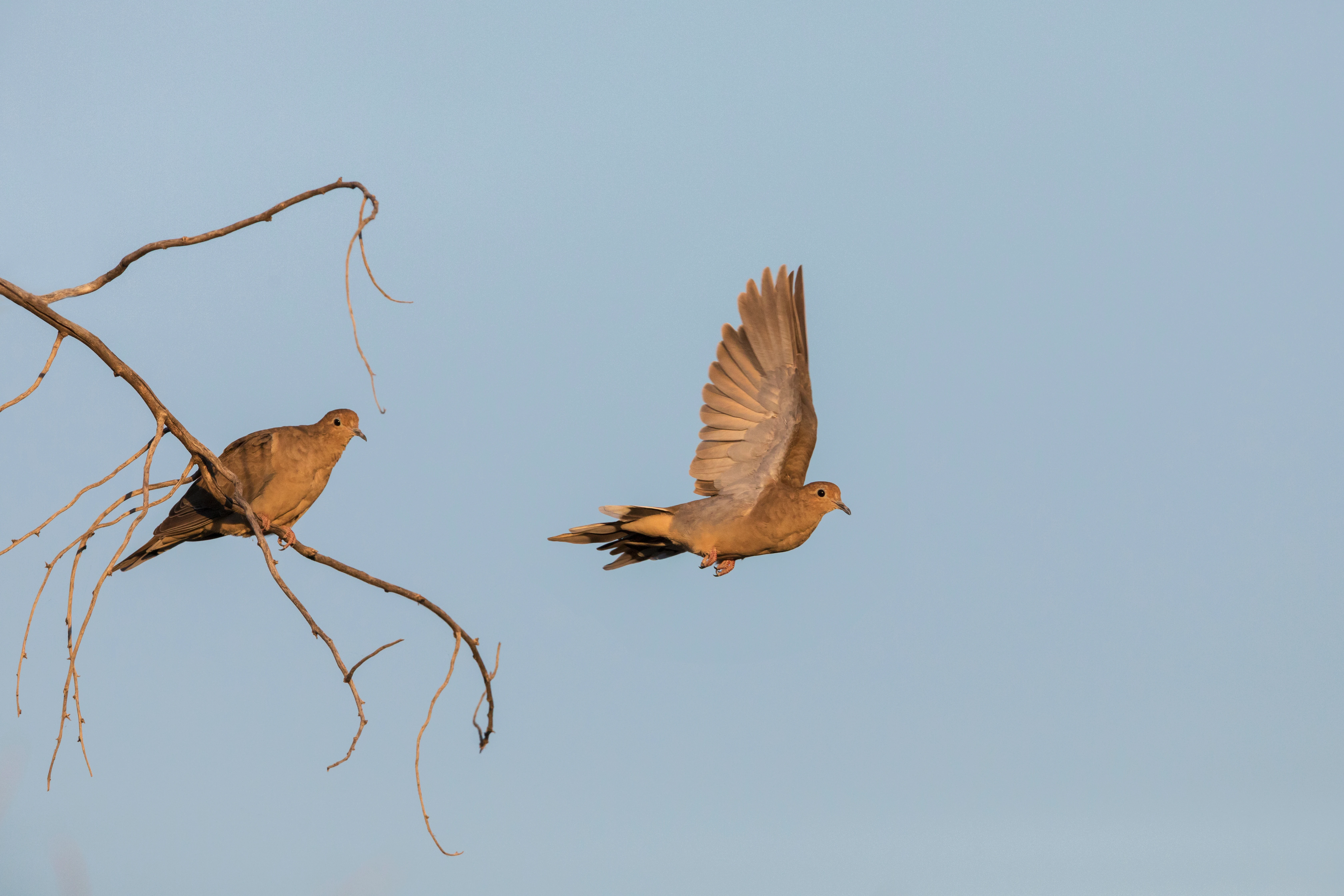I could ask the other hunters to join me, or yell at them. Instead, I choose a strategic retreat and leave. About 10 A.M. I’m back. There’s no one around—only piles of empties and makeshift blinds to show where they’ve been—and doves cruise the field unalarmed. I set my bucket in a thin strip of sunflowers where I can crouch semi-concealed and put my Mojo Dove decoy about 15 yards away. I shoot a limit in solitude. Sometimes the very late bird gets the best worms.
How to Find Your Own Doves
For a lot of people, dove hunting is the ceremonial first pitch of fall, a day or two of anticipation that precedes the “real” hunting to come. Doves descend on the sunflower fields, then they’re done. For me, though, dove season is a real hunting season; one day is nowhere near enough.
About two days of heavy shooting burns the doves off public fields. I’ll hunt there again on the third day, but pickings are slim. From then on, you have to find birds on your own. A friend of mine makes an annual September dove trip to South Dakota, scouting and shooting doves in canola fields. In Ohio, I’ve shot them in pumpkin fields. Melon and cotton also attract doves, and I’m told hemp fields are even better.
As long as there are seeds on the ground and bare dirt, doves will feed. Where I live, you look for chopped corn early in September. That means finding old-school farmers who keep cattle and cut silage for them; not the get-big-or-get-out cash-grain farmers that predominate the state. A couple of days after the opener, I take a scouting drive up and down the gravel roads, finding nothing but a wall of standing corn and a few fields of beans. Just as I’m about to quit for the day I strike potential gold: a cut silage field with about 20 doves on the wires across the road. Glassing the field edge, I can see doves in the branches of dead trees and sitting on the fence wire.
Related: Dove Hunting 101
Don't Be Afraid to Knock on a Door

The farmhouse is empty and dark, but I can hear someone pounding nails behind the barn. The farmer and his wife, both in their late 70s, are fixing the cattle pen. She’s holding a board for him as he drives nails. The steers give me a wary eye as I climb the fence.
Conventional wisdom says you converse with farmers about the weather and the price of corn before you ease into the topic of hunting permission. That never made sense to me. Here I am, a stranger, clearly a town guy, trying not to step in cow pies as I pick my way across the pen. I obviously haven’t come by to talk about the weather. I introduce myself and ask straight out if it would be O.K. to hunt doves.
“You mean geese?” they say. Goose season is closed, but I make a mental note. The day keeps getting better. “No, doves,” I said. “I saw quite a few around your cut cornfield.” Dove hunting is still comparatively to Iowa, so you always ask about the birds with a little trepidation. A lot of people here think doves are the biblical bird of peace. Others ask: “What do you want to shoot them little things for?”
“I don’t care,” the farmer said. Next day I’m back at 3 P.M. with a bucket, a spinning-wing decoy on a tall stake, and a pack full of ammo and water. There are two cut fields, the one I saw from the road and a second that stretches almost a mile down to a creek with corn standing on the west side. Figuring I’ll have the afternoon shade to hide me, I sit in the long field with my back against the cornstalks, setting my spinner out 15 yards away.
I load my gun, a 12-gauge Browning Gold semiauto. Much as I like break actions in the uplands, I hate shooting them in the dove field. Two-barreled guns are always open and unloaded at the wrong time. You throw two shots at a long crosser, then watch helplessly with a gun broken open as another dove floats over your head. In my dove gun, I want three shots and fast reloads.
I soon realize the doves on my side of the field are flying behind me over standing corn—and I don’t want to have to go looking for downed birds among the stalks. Doves on the other side, meanwhile, keep lighting in a small tree on the fenceline as they trade from one end of the field to the next. So I move across. The spinner probably isn’t necessary, but I stand it up in the tree branches anyway. There’s no good place to set my bucket and hide, so I use my backpack as a headrest and lie in the stubble. A khaki shirt, olive pants, and a low profile will be concealment enough.
Sitting up to shoot off your back increases the degree of difficulty, so my hunt goes deep into a second box of shells before I pick up my gear and my 15 doves. On the way out I stop at the house to give the landowners some locally made jam and say thanks.
“Come back any time,” they say. I tell them I will for sure. After all, it’s hunting season.


